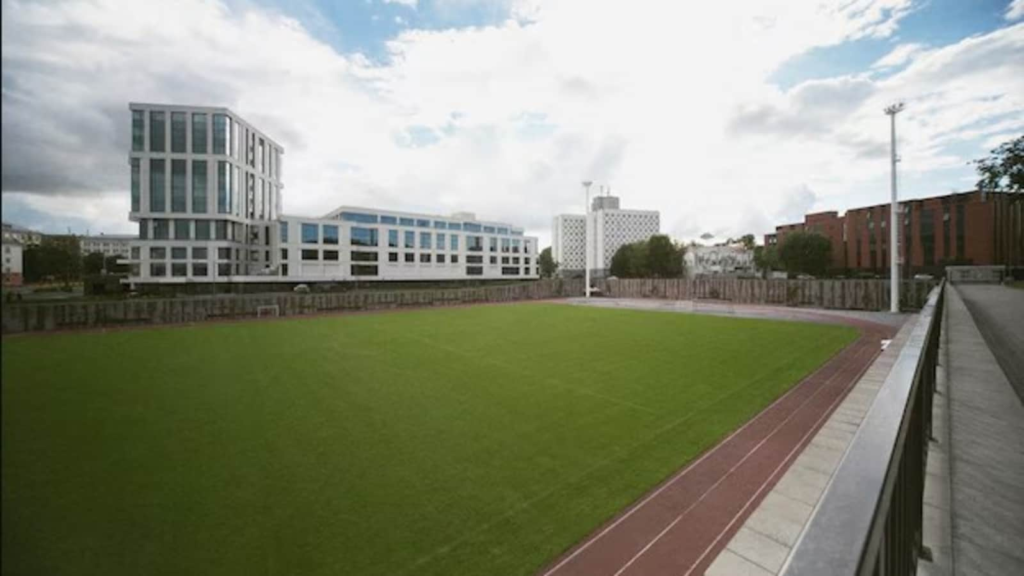Last week President Donald Trump’s administration decided that Title IX gender discrimination protections won’t apply when schools begin directly paying athletes for their name, image and likeness rights — or NIL — later this year. The move rescinds the guidance that was put in place in the last days of the Biden administration.And just like that, rather than divvy up their millions equally between men’s and women’s sports, colleges and universities are free to send all of the money to male football and basketball players.
The Trump administration’s decision is no surprise, but it’s a slap in the face to all of the female athletes whom Trump has recently claimed to be protecting.
NIL is a right to publicity, and in recent years it’s become a key way for college athletes to raise their profiles. Any time you see a college athlete hawking a product on Instagram, TikTok or — more rarely — network television, that’s an NIL deal.
However, most NIL money isn’t paid out so athletes can promote a hot new brand on Instagram. Instead, more than 80% of the checks are written out by groups of boosters and donors who collaborate with athletic departments to recruit athletes to schools, according to Opendorse, a leading NIL marketplace. In return, the athletes are expected to do promotion for the collective and its donors.
The problem is that most collectives aren’t focused on recruiting women. Instead, according to Opendorse, around 85% of collective funding flows to football and men’s basketball players. And the money, arguably, isn’t even the worst of it. By reserving most of their funds for men, the collectives — and their associated schools — ensure that male athletes earn the bulk of the exposure.
For women athletes, college or otherwise, this is a new version of an old problem: a bias in broadcasting. As recently as 2019, ESPN’s flagship Sports Center devoted a mere 5.7% of its airtime to women’s sports, according to a study from the University of Southern California. Network news affiliates devoted just 5.1% of their sports coverage to women.
The impact was and is significant. In 2015, for example, Andy Benoit, then a writer for Sports Illustrated, tweeted that “women’s sports in general [are] not worth watching” in the midst of a thrilling Women’s World Cup. He supported this contention by adding, in a second tweet: “TV ratings agree, btw.” Benoit later deleted his tweets, but the circular reasoning of mainstream sports journalism was laid bare: Women’s sports aren’t popular so they’re not worth covering; and they’re not worth covering or televising because they’re not popular.
Social media has helped to break down some of those barriers by enabling women college athletes to cultivate their own followings. Meanwhile, NIL has incentivized them to post even more in hopes of garnering lucrative sponsorships.
But that extra work exposes the level of unfairness in an ecosystem in which collectives are devoted to recruiting men. In December, CBS Sports reported that several schools — working with collectives — recruited AJ Dybantsa, the nation’s top men’s high school basketball prospect, with offers worth upwards of $5 million. That’s money that a young man earns before he even suits up for a college team. Meanwhile, top recruits in women’s college basketball usually have to wait until they’ve established themselves as star athletes and influencers to earn millions.
Unsurprisingly, very few women actually pull it off. Olivia “Livvy” Dunne, a Louisiana State University gymnast, who has claimed to have received over $500,000 for a single social media post, is currently the most prominent to do so. On3, a college sports news site, currently ranks her as having the fourth-highest NIL value in the country, at $4.1 million. The next woman on the list — Dunne’s LSU classmate, the dynamic women’s basketball guard Flau’jae Johnson — doesn’t appear until #48, with a valuation of $1.5 million.
Rather than simply celebrate her unlikely achievement, Dunne is also pushing back against the system that makes her and Johnson outliers. In 2023, she set up her own NIL collective, the Livvy Fund, to help women athletes at LSU get deals. Her pointed rationale, as shared with Sports Illustrated, is that women’s sports “deserve the same publicity as the men’s.”
Most schools and collectives don’t see things Dunne’s way. Last year, a landmark lawsuit settlement authorized colleges and universities to bring the collective system in-house and share around $20.5 million in NIL payments with athletes starting this year. Unfortunately, the deal didn’t address how — if at all — Title IX factors into those payments. Without guidance, many schools made it clear that they planned to continue their current practice and pay the bulk of their NIL money to men. That’s why the Biden administration’s Education Department stepped in.
The Trump administration’s new guidelines give schools and collectives legal cover. Worse, they send an unmistakable message that the administration is unwilling to address the systemic sex discrimination directed at women’s athletes and sports at the college level. Rather than ease walls that have kept women’s sports from the mainstream, President Trump is reinforcing them.
More From Bloomberg Opinion:
This column does not necessarily reflect the opinion of the editorial board or Bloomberg LP and its owners.
Adam Minter is a Bloomberg Opinion columnist covering the business of sports. He is the author, most recently, of “Secondhand: Travels in the New Global Garage Sale.’
This article was generated from an automated news agency feed without modifications to text.
Catch all theBusiness News, Sports News,Breaking NewsEvents andLatest News Updates on Live Mint. Download TheMint News App to get Daily Market Updates
MoreLess

